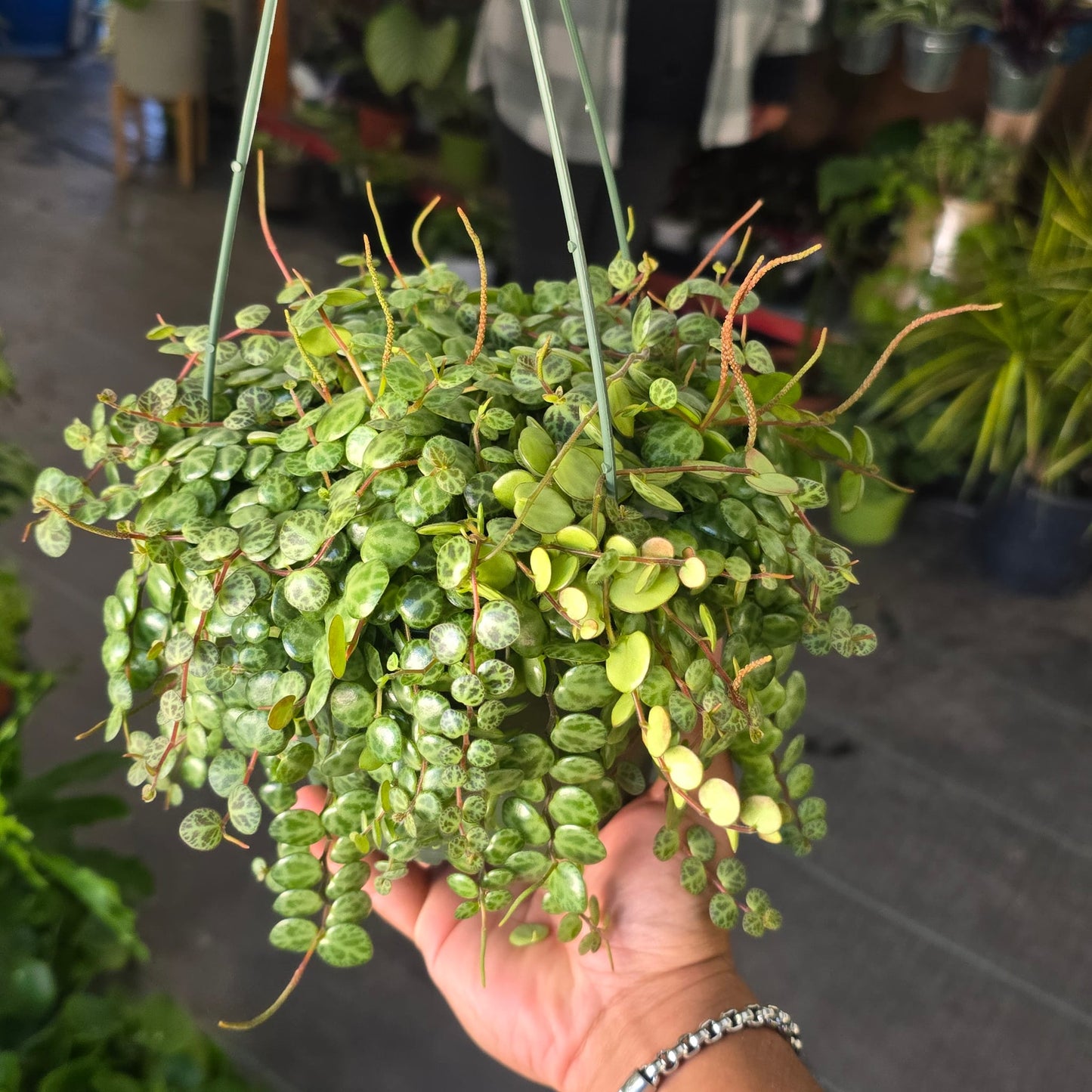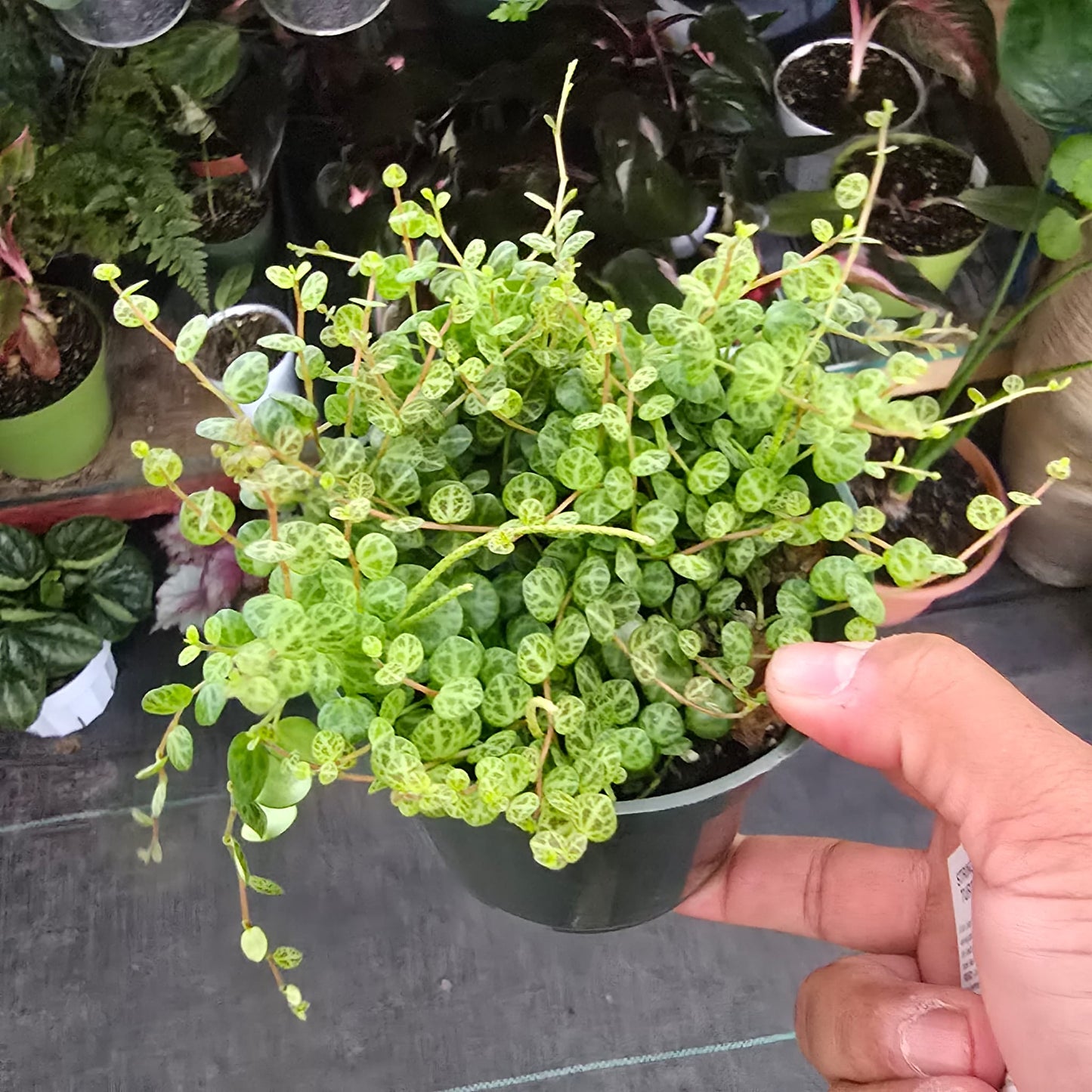Couldn't load pickup availability
String of Turtles Succulent plant easy care in 6 inch pot
String of Turtles Succulent plant easy care in 6 inch pot
The "string of turtles" you're referring to is most likely Peperomia prostrata, a popular and charming houseplant. Here's some information about it:
What it is:
* It's a small, trailing succulent vine native to the rainforests of Brazil.
* Its common name comes from its unique leaves, which are small, round, and patterned with green and brown markings that resemble tiny turtle shells.
* It's also sometimes called "Turtle Vine" or "Jade Necklace."
Appearance:
* It has delicate, slender stems that can grow to about 12 inches long.
* The leaves are the main attraction, typically about 1/2 inch in diameter, and have a slightly succulent feel.
Care:
* Light: Prefers bright, indirect light. Too much direct sun can scorch the leaves, while too little light can lead to leggy growth and loss of the distinct leaf patterns. An east-facing window is often ideal.
* Water: String of turtles is semi-succulent and doesn't need a lot of water. Allow the top 1-2 inches of soil to dry out completely before watering. Overwatering is a common issue and can lead to root rot. Use well-draining soil, such as a mix for cacti and succulents.
* Soil: Requires a well-draining potting mix. A cactus or succulent mix amended with a bit of peat moss or coco coir to retain some moisture is often recommended.
* Temperature: Prefers temperatures between 65-75°F (18-24°C). Protect it from drafts and temperatures below 55°F (13°C).
* Humidity: While it can tolerate average household humidity, it appreciates slightly higher humidity, especially during dry winter months.
* Fertilizing: Feed with a diluted, balanced liquid fertilizer every 4-6 weeks during the growing season (spring and summer). Avoid fertilizing in fall and winter.
Propagation:
String of turtles is relatively easy to propagate through stem or leaf cuttings:
* Stem Cuttings:
* Cut a 3-4 inch section of a healthy stem, just below a node (where a leaf grows).
* Remove the leaves from the lower part of the cutting, exposing a few nodes.
* You can root stem cuttings in either moist potting mix or water.
* Soil: Plant the cut end in moistened soil, ensuring at least one node is buried. Keep the soil consistently moist and provide bright, indirect light.
* Water: Place the cut end in a jar of clean water, ensuring no leaves are submerged. Once roots develop (usually in a few weeks), carefully pot the cutting in well-draining soil.
* Leaf Cuttings:
* Carefully remove a leaf with a bit of the stem (petiole) attached.
* Allow the cut end to callous over for a few hours or a day.
* Plant the leaf-stem in moist succulent mix, partially burying the stem.
* Keep the soil lightly moist and provide bright, indirect light. It can take a few months for new growth to emerge.
Common Problems:
* Overwatering: Leads to root rot, indicated by yellowing or mushy leaves.
* Underwatering: Can cause the leaves to lose their plumpness and the stems to wilt.
* Insufficient light: Results in leggy growth and faded leaf patterns.
* Pests: Generally pest-resistant, but can occasionally attract spider mites, mealybugs, or whiteflies.
String of turtles is a delightful plant that adds a unique touch to any indoor garden with its interesting foliage and trailing habit, making it perfect for hanging baskets or displaying on shelves.
----------
Get a Similar or better plant(s) than the pictures! 📷
Heatpack is included if needed, i'll check your local weather when it comes to ship it, it will also depend on the plant family. Example: Alocasias, philodendrons, monsteras.
Weather: Plant will be safely packed, even heavy 20 lb+ plants make it safe to anywhere in USA
Shipping: Handling time is from 2-6 days, transit time 1-3 days.
Quality: The picture is a sample of a good quality plant, you'll receive the same or even better!
Guarantee: Safe arrival is guaranteed, if the're any problem, please email the pictures and we'll find the best solution, replacement if the plant is heavily damaged (very rare case).
Thank you for your support!
Share




